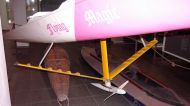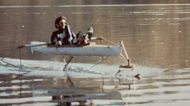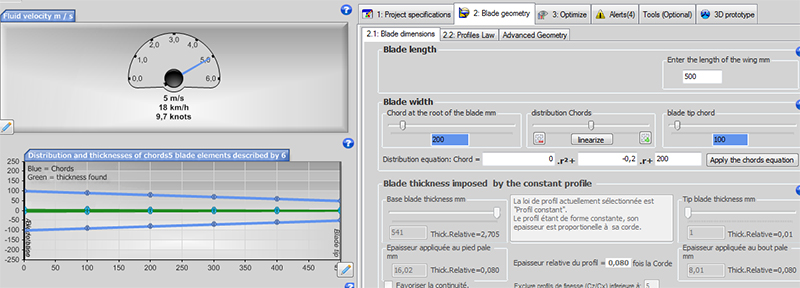Modeling a wing mast sail in heliciel
Introducing the mecaflux software suite:
Wings or foils modeling in heliciel
Aerial propeller modeling in heliciel
Boat propeller modeling in heliciel
Ventilation propeller modeling in heliciel
Wind turbine propeller modeling in heliciel
Tidal turbine modeling in heliciel
Kaplan propeller modeling in heliciel
Tutorial building wing or foil (initiation)
nderstand and master the construction of wings or foils: part 1:
This first tutorial initiation allows take over the HELICIEL software for the design of a simple wing. Force options incidence, twisting, or thickness distribution are detailed in the second tutorial "building wing or foil (deepening)."
- A page about Overview on the wings can be accessed to review the fundamentals to know the design of the wings. Wings, hydrofoils, sails.
- Whether you want to build a wing or a hydro foil method will be similar. In this tutorial, we will build and model a hydro foil or wing without distinction. The problem of cavitation is a particularity of hydrofoils, it is discussed on page cavitation.

- In the Tab2: blade Geometry> 2.2 profiles Law select: A) Law constant profile..

.


- We will proceed by trial length and shapes to find the best compromise.
- We'll start with a wing span of 1 meter. As we calculate and model a wing half, our length of foil will be 0.5 meters
Two main unknowns occupy us:
- The speed to create lift 1000N (500 N for half wing)
- The power required to produce the lift at this speed
We'll see how easy it is to have these results:
- In the "1.1Fluide" tab: Check the fluid (sea water 10 °)
- In the tab "1.2Goal": Check the selection "Foils Wings hull"
- In the tab"1.3 Operating point": enter the speed 5m/sec
- In the tab "2.1Blade Dimensions":
- Enter the length of half wing or foil : 500 millimètres
- Enter the chord at the blade root: 200
- Enter the chord at the blade tip: exemple 100
- Click linearize in the distribution of chord (think linearize after each change dimensions or the number of elements!)..
- Constatez que les épaisseurs de votre foil sont déterminées par la forme de profil

-
Our half wing or foil is close to be tested, just click on the "rebuild" button in the horizontal toolbar at the top right of the software:
What héliciel is doing on rebuild?:
- Heliciel will look in the database performance profiles selected, the angle of incidence providing maximum lift/drag ratio.
- The 3D model is built with the incidence providing maximum lift/drag ratio.
- Drag, lift, power, resistance, and other results are calculated taking into account the phenomenon of downwash
Your foil should look like this (the particles have been activated from the menu of the 3D model):
Focus on the outcome of particular interest:

-
We note that the lift is 707 N for 197 Watts of power. (Total Drag X speed= propulsion powerto provide ) For a wing, the results of the half wing or hydrofoil must be multiplied by 2:
- Full wing lift= 707 X 2=1414.
- Full wing propulsion power to provide =197 X 2=394 Watts
-
We must carry 500 N per half wing, so we will try to find the speed that gives us 500 N lift. To avoid multiple testing, we will use the "multiple analysis", this feature allows us to edit a curve lift and / or power depending on the speed. The multiple analyzes can be run from the 3 tab: Optimize, or through the Edit menu of the software. Here is the result of an analysis of speed range from 1 to 5 m / sec (select lift and power output in the curves to be displayed)

We could reduce the width of our wing or foil to increase its aspect ratio and thus reduce losses wingtip. This will save ratio drag / lift, so the energy available to increase the speed.
In the tab"2:Blade Geometry>2.1Blade Dimensions "we will refine the tip of our wing from 50 to 100 mm and the base of the wing or rotor blade pass from 200 to 150. Do not forget to "linearize" to update the form with the new data:

-
Rebuild

-
note the speed and lift to 125 watts: 5.5m/sec and lift about 430 Newtons ... We gained speed, but the lift is a bit small (we need 500 newtons per half wings ...) it will slightly increase the surface of the foil .. Now it's your turn to play and create the best compromise for your project ......
This tutorial does not take into account the fact that with a power of 250 watts to the propeller shaft it is virtually impossible to provide propulsive power of this value. Propeller efficiency and transmission elements decrease the power output. A good hydro foil should therefore have a good propeller to not waste valuable energy of our happy pedaler that sails on the waves while dreaming..

 Global site map
Global site map Mecaflux
Mecaflux Tutorials Mecaflux Pro3D
Tutorials Mecaflux Pro3D Tutorials Heliciel
Tutorials Heliciel Mecaflux Store
Mecaflux Store Compare software functions
Compare software functions Quotes, Orders, Payment Methods
Quotes, Orders, Payment Methods project technical studies
project technical studies